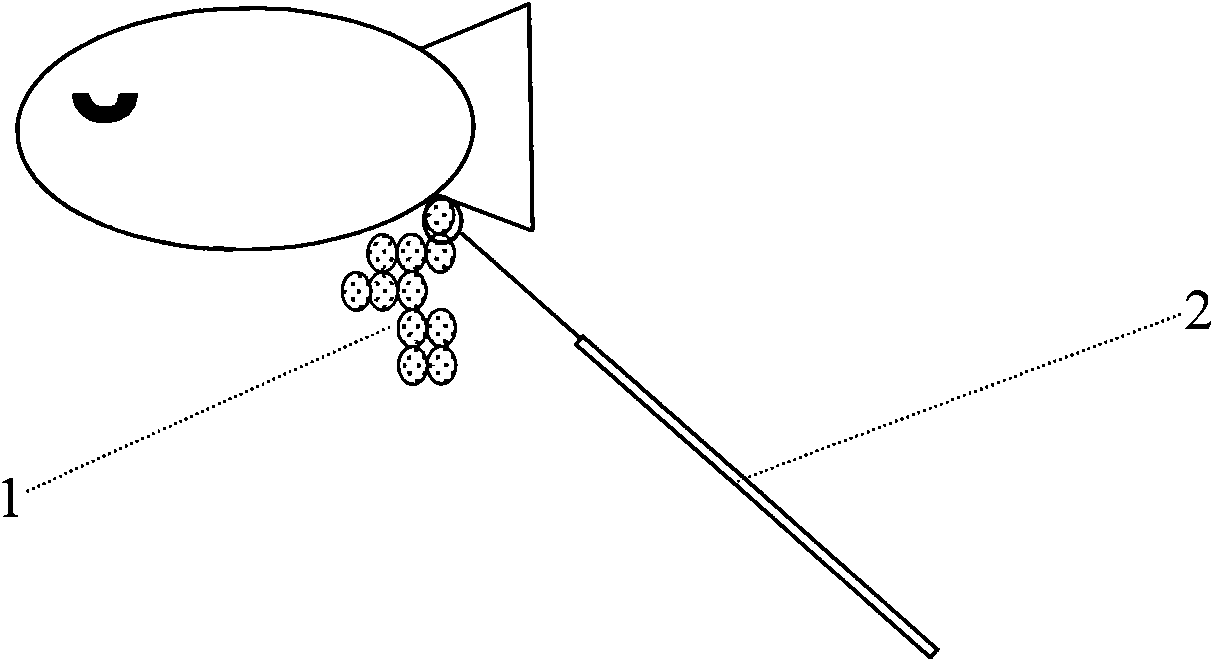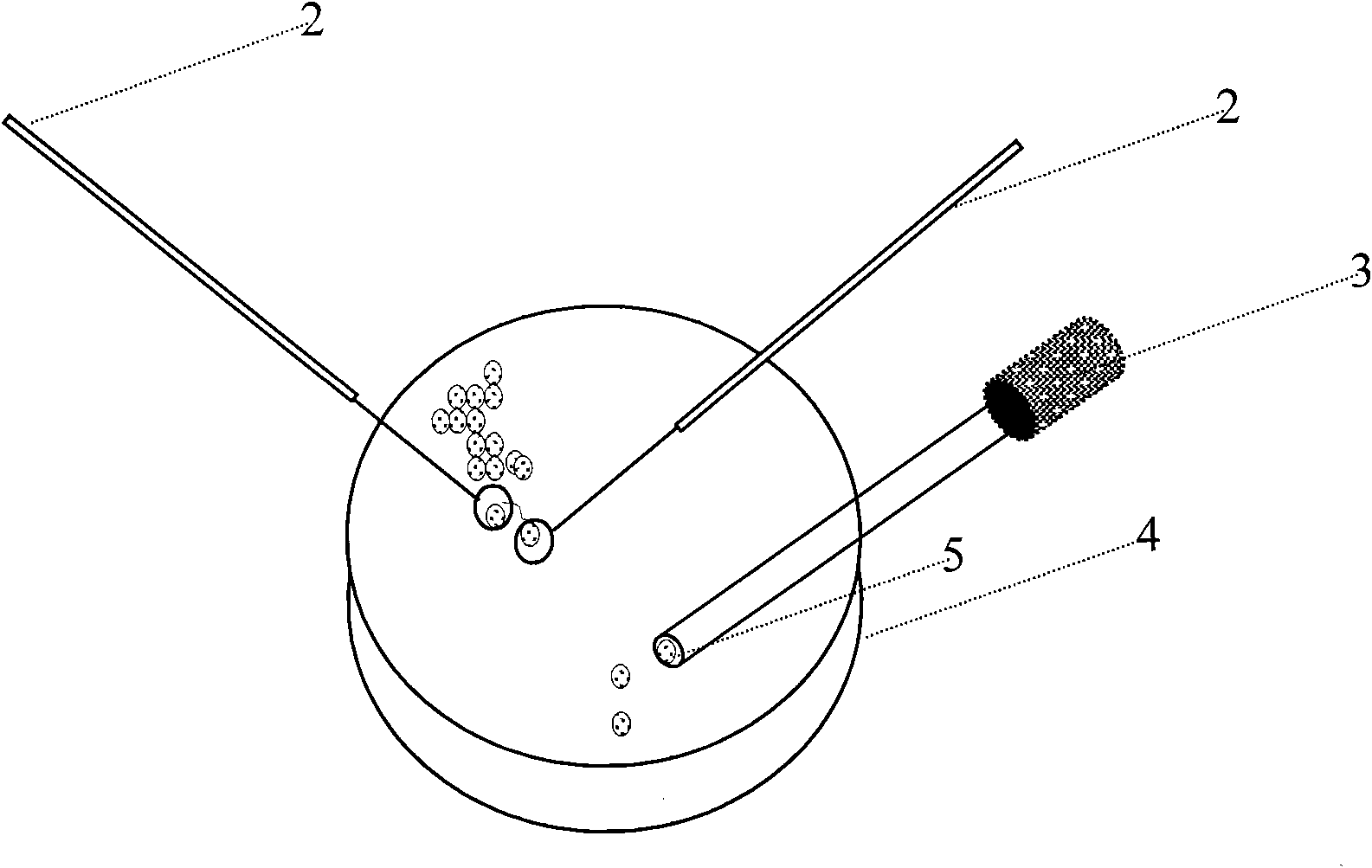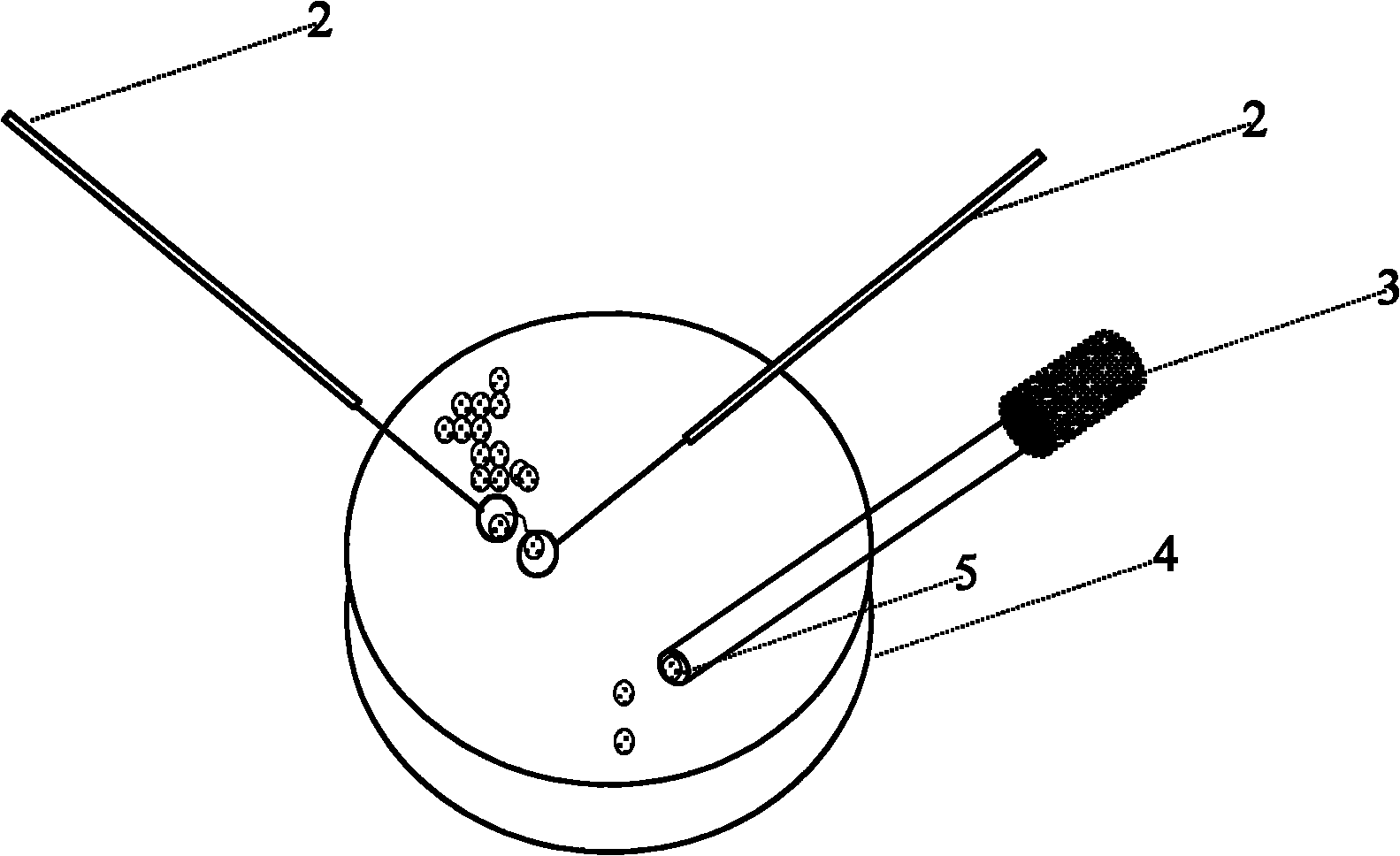Method for collecting and separating medaka zygotes
A separation method and fertilized egg technology, applied in the field of fish fertilized egg separation, can solve the problems of hatching failure, broodstock injury, easy to puncture egg membrane, etc.
- Summary
- Abstract
- Description
- Claims
- Application Information
AI Technical Summary
Problems solved by technology
Method used
Image
Examples
Embodiment Construction
[0010] The invention utilizes a commercially available disposable inoculation loop to collect and separate fertilized eggs, and the inoculation loop is made of soft and elastic engineering plastic material. The fertilized eggs of medaka fish are about 1mm in size, so it is advisable to choose an inoculation loop with a hole diameter slightly larger than the egg diameter when purchasing.
[0011] The invention is equipped with auxiliary tools such as a small net, a glass petri dish, and a large-mouth straw. The soft small net is used to fish for broodstock; fertilized eggs are separated in a glass petri dish with a size of 9 to 12 cm;
[0012] The operation method is carried out according to the following steps (see accompanying drawings 1 and 2):
[0013] Within 1 hour to 6 hours after spawning, fish the female fish with eggs hanging on the abdomen to the water surface with a soft small net (do not leave the water surface);
[0014] Use a disposable inoculation loop 2 to remo...
PUM
 Login to View More
Login to View More Abstract
Description
Claims
Application Information
 Login to View More
Login to View More - R&D
- Intellectual Property
- Life Sciences
- Materials
- Tech Scout
- Unparalleled Data Quality
- Higher Quality Content
- 60% Fewer Hallucinations
Browse by: Latest US Patents, China's latest patents, Technical Efficacy Thesaurus, Application Domain, Technology Topic, Popular Technical Reports.
© 2025 PatSnap. All rights reserved.Legal|Privacy policy|Modern Slavery Act Transparency Statement|Sitemap|About US| Contact US: help@patsnap.com



